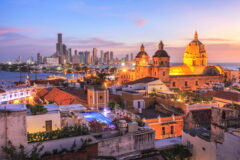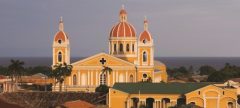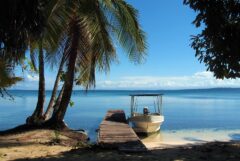Chicken Supremski – Impressions of Antarctica

The nature of Antarctic cruising has evolved markedly over the past decade. The first adventurous tourist cruises took place in the 1960s, but tourism only really took off in the nineties, when Russian ships like the one travelled on by Journey Latin America’s Founder Director, Chris Parrott in 1995, began offering no-frills cruises on converted research ships. In most cases, the facilities and installations on the ship hadn’t changed much from the previous use, and passengers expected rudimentary amenities and a modicum of discomfort. Nowadays, in the 21st century, a new generation of ships, purpose built with passenger comfort in mind, offer Antarctic holidays where the ship itself is part of the enjoyment and experience. For a blast from the past, read our Founding Director Chris Parrott’s article, first published in Papagaio 17 years ago, which evokes how it felt to travel to Antarctica in the early days of tourism.
CHICKEN SUPREMSKI, by Chris Parrott
Romantically, my vision of Antarctica had been peopled by seafarers in tall ships out of ports like Nantucket, Whitby and Bergen. The bowsprit of a four-masted brig would rear up from a foaming austral sea; weatherbeaten youngsters hardly into their teens would spend twelve hours aloft in the face of icy gales in the Roaring Forties. There were tales of hardihood and endurance that would stir the heart of every Englishman.
A hundred years - almost to the day - after the first recorded footfall on the Antarctic mainland, I boarded the Alla Tarasova at Ushuaia, in Tierra del Fuego.
Alla Tarasova is a Russian cruise-liner with an ice-strengthened hull – one of half a dozen ships of varying sizes manned by Russian crews out of the port of Murmansk. The Glasnost thaw in relations was seized on by western tour operators: Europeans and North Americans had hard currency, the Russians spare ships and officers with years of Arctic experience.
We weighed anchor at 10pm, sailed along the Beagle Channel, and woke to 'moderate' seas in the Drake Passage. Not everyone made breakfast on the first morning; there was a better turn-out for the first of a series of slide-illustrated lectures from the Expedition Staff. Alan Morgan prefaced "Birds of the Southern Ocean" with the self-effacing observation that he wouldn't be offended if anyone threw up in his lecture. The man next to me promptly did.
Things got better. On the second day, we sighted our first tabular iceberg, gliding past the port bow in the afternoon sun.
Each morning, you get a wake-up call from a small loudspeaker in your cabin (with a little fiddling it can be made to receive BBC World Service). It's usually a breakfast announcement, but on the third morning it came
at 5am. "Ladies and gentlemen, we have arrived."
Wilhelmina Bay, in the lee of the South Shetlands, facing the Antarctic Peninsula. In the next 15 minutes all 75 passengers made their way to the topmost deck.
Towers of black rock, filigreed with grey webs. The peaks and the valleys between them smothered in a stratified white mantle hundreds of feet thick. Flat calm. Morning mist. Light powdery flurries. No-one spoke.
Five hours later, well-breakfasted, we were marshalled into groups for a zodiac landing. Nobody gets past the bulkhead without their life-jacket being checked – two burly Russian sailors grab your wrists as you step into the bobbing zodiac; the same as you step ashore. Most landings are 'wet': you need wellies.
I didn't know much about penguins before I went. I did know that there are several different sorts and you only get them in the southern oceans. Now I know how to approach them, how to make friends, and how not upset them (if only it were that simple with humans).
On this island there are gentoos, chinstraps and macaronis. Everyone is enchanted by their first encounter. Everyone is also overdressed. We soon learn that when we land on an island where you climb and walk around, you warm up quickly; when you sit in the windswept zodiac, or land on a very small island, you quickly cool down.
That evening, it's my turn to sit at the captain's table, along with a couple of Belgians, a German lady and two Frenchmen. The captain is a slightly-built, taciturn man who inspires confidence. The conversation is mostly in English, because Tatania, the restaurant manager, acts as the captain's interpreter.
We cross the Antarctic Circle at 7.30am next morning; the mate gives three blasts on the foghorn. I'm standing on the bridge at the critical moment, looking at the charts and the computerised compass reading: 66º33'S, 67º02'W. Passengers are allowed on the bridge at any time. In the middle of the day it gets fairly crowded, because it's warm and the visibility is excellent. But late at night there's just two crew, and the odd passenger; the spotlights pick a careful course through the sea ice and narrow channels.
By the time I turned in just before midnight, the ship was beating south through a blizzard, made more dramatic by the spotlights. The plan for the next day had been to visit Stonington Island, the site of former British and US survey bases. We were to see clear evidence of climatic change - glaciers that in 1948 had linked the island with the mainland now ended there. The glacier bridge had retreated 500 yards. Pictures of the base
showed it to consist of a wooden allotment shed that housed half a dozen men through the winter, with outside temperatures 40 below.
But we never got there; the frozen mantle had already closed in, as unpredictable as it was at the turn of the 20th century when virtually all the great names in Antarctic exploration – Scott, Amundsen, Shackleton,
Gerlache – had at one time or another found their wooden ships frozen in for nine months of the year. No radios then...
We steamed northwards again, past Weddell seals and leopard seals sunning themselves on the floes. The phone call I made to my wife from the radio room was as clear as clear as a local call – she was suitably impressed.
I was downstairs in the Reading lounge engrossed in a book when Expedition Leader Denis Minse announced over the tannoy, "Ladies and gentlemen, we have breaching minke whales on the starboard bow."
The reading lounge emptied, and we sprinted upstairs with gloves and cameras and parka-zips...an ecstasy of fumbling. It's an amazing sight to see these huge creatures leaping from the icy waters.
Deception Island is a drowned crater, the circular remains of a giant volcano, and a perfect natural harbour. Steam rising from the ash-black beaches betrays subterranean hot springs. We went swimming here, but you've got to be careful. Get it right and it's like a warm bath with hot and cold spots. Get it wrong and it’s superheated steam up your jacksie.
Seventy years ago this caldera was home to Whaler's Bay - a miasma of sulphur, a stench of carcasses butchered on the flensing plan, foetid blubber digesting in massive boilers, the bay crimson with blood from the slaughter factory.
This settlement is now a rusting scrapyard, the bleached huts and graves half buried in 8 feet of volcanic ash. Huge storage tanks the size of gasometers are scrawled with fading Argentine graffiti.
For more information and inspiration on visiting Antarctica take a look at our new Antarctica brochure.
Tailor-made holidays
Flexible, custom-made holidays to Latin America created to match your exact requirements: our tailor-made itineraries are as unique as the clients for whom they are designed.
Design my tripPapagaio
Your edit for Latin American inspiration
Our exciting range of articles on Latin America explore everything from iconic destinations and lesser-known cultural gems to delicious traditional recipes. You’ll also find exclusive travel tips, first-hand client reviews and the chance to get your personal questions answered by our travel experts.
View Extraordinary Inspiration






































